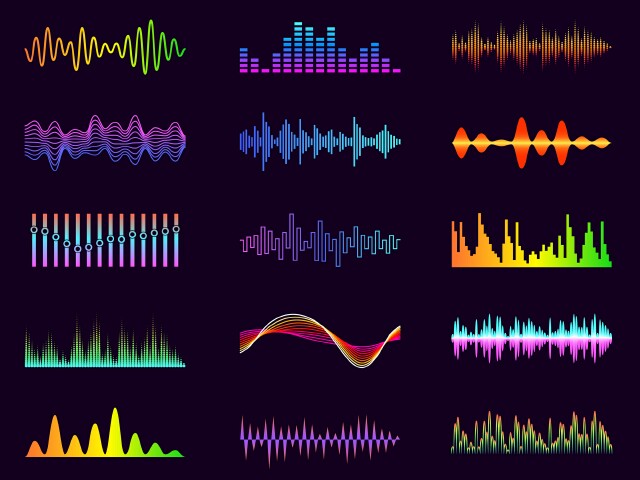Audacy: Sonic Strategies That Help Brands Achieve Their Goals

Studies have indicated that audio cues can be far more effective than visual cues in brand messaging. But fewer than 10% of brand advertising assets employ audio cues, according to researchers like Ipsos. So, there's a huge opportunity for brands to benefit from audio's proven advantages in scale, efficiency, targetability and measurability. That's according to Paul Suchman, Chief Marketing Officer of the audio giant Audacy, who recently moderated a webinar on the topic called "Why Sonic Strategies are Critical for Your Brand." He noted that a brand's audio, or sonic, identity -- how it sounds --is becoming increasingly important for marketers as culture moves into the world of screenless computing.
Sonic branding is certainly something that agency and media sales professionals want to know more about. A recent "State of the Industry" survey, which was conducted by MediaVillage/The Myers Report, asked respondents what industry topics they'd need "cliff notes" to explain. And sonic branding ranked No. 1 -- followed by blockchain, crypto and NFTs.
Invite job candidates to apply live during the Media and Advertising Community’s Black Talent Outreach Week at MediaVillage.com and AdvancingDiversity.org October 17-20. Apply for jobs/submit your resume here.
Sonic identity isn't just about ad messaging on radio, podcasts, streaming services and the like -- although those elements are certainly a part of it. It extends "a brand's identity and footprint into the sonic realm," said Suchman.
It all starts in the brain, according to Dr. Paul Zak, Founder and Chief Immersion Officer of Immersion Neuroscience. "Sound has a holistic effect on the brain," he explained. "But the most important thing from a branding perspective is that sounds connect us to emotional states and emotional memories."
Studies by Immersion have demonstrated that measuring neurological responses to new music, for example, can predict hits several months in advance with over 95% accuracy.
"Our brain knows what we love," Zak said. "When that love is associated with a brand, we carry over that love and appreciation for the song or the sound into that brand."
Zak's research has found that more immersive messages, including sounds, are "tagged" with high emotion and saved by the brain in a very particular way. Once they are locked in, they can remain in the brain for a long period of time and can be very easily recalled. From a branding perspective, sounds can be used to cue emotions and create a state of feeling in the listener that can evoke brand recognition and even prompt purchases.
A significant example of applying sonic strategies to a brand that, as Suchman put it, "lives and breathes in both the physical world and the digital world," comes from Best Buy. Sonic cues played a major role in a current campaign by the big-box retailer. Details were shared during the webinar by Best Buy's Executive Creative Director, Bruce Bildsten.
The Best Buy campaign revolves around little "victories" or accomplishments in everyday life that are assisted or made possible by technology and electronics. The campaign was deployed across multiple channels including linear TV, digital TV, social video, radio, streaming audio and other media. It includes an original, glissando-like audio cue created for the brand by a team of musicians and employed as a sonic "button" at the end of each spot.
"It's super-simple," explained Bildsten. "It's just an audio cue, but you hear it in all our work, and it plays a role in telling the story." In essence, the promotional message and its sound logo remind consumers of the signals that various pieces of equipment emit, indicating that the users have accomplished something.
So how does a brand that's ready to extend its identity with sound go about it from a creative standpoint? "The short answer is that there are a lot of different ways that you can approach sound for your brand," said Paul Amitai, Executive Strategy Director for the creative audio company Listen. "There's no one solution that's going to work for everyone."
Amitai noted that the Best Buy campaign that Bildsten cited presents an interesting solution, a so-called brand "sound logo" that can live across a wide variety of channels and applications. It's one of the "sonic touchpoints" that brands can employ to create a sonic identity -- along with brand-specific music, a branded approach to voice, and UX (user experience) sound design. Put together, these touchpoints offer brands a huge opportunity to flex their sonic muscles.
With sound logos, today's brands are moving from the earlier, melodic "jingle" approach of, say, McDonald's or State Farm, to a shorter, still-hummable form that can be used in a wider variety of applications.
"We've moved across the spectrum to an even more textural design that's less about a hummable melody, but still delivers around a brand's personality, around mood," Amitai added. As an example, he mentioned Netflix's iconic "ta-dum" intro into content offerings that creates a "sense of anticipation for what you're about to watch" -- still recognizable without having an actual melody.
At the end of the day, Amitai said, it's about figuring out your brand's identity and starting to think about its attributes in terms of sound characteristics -- including music, voice and voice casting, and other sonic elements -- in a strategic approach that can help bring your brand's personality to life.
Click the social buttons to share this content with your friends and colleagues.
The opinions and points of view expressed in this content are exclusively the views of the author and/or subject(s) and do not necessarily represent the views of MediaVillage.com/MyersBizNet, Inc. management or associated writers.


